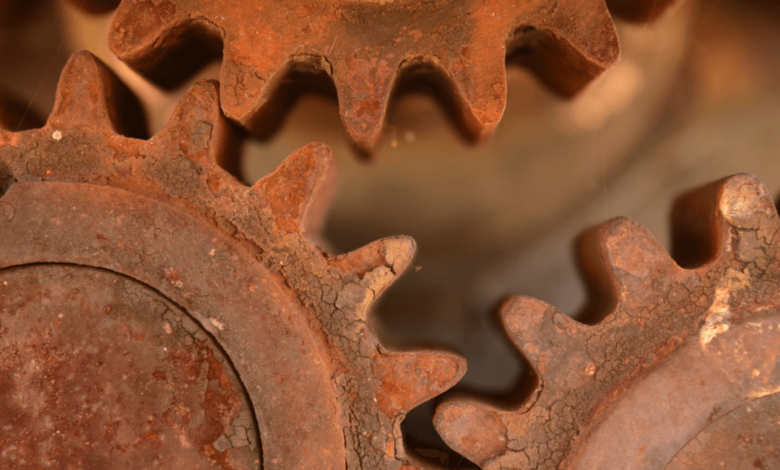Corrosion Protection: Essential Strategies for Long-Lasting Metal Care

Metallic components are fundamental to countless structures and machines used in industries across the globe. Ensuring the longevity and reliability of these components requires a proactive approach to corrosion protection. This article explores the essential strategies for long-lasting metal care, delving into the methods and treatments that can preserve the integrity and functionality of metal assets.
Understanding the Need for Corrosion Protection
Corrosion is a relentless process that deteriorates metals by chemical reactions with the environment. This not only undermines the aesthetic appeal of metals but more critically, it compromises their structural integrity. Failure to prevent corrosion can lead to disastrous consequences, including catastrophic structural failures, loss of valuable assets, and increased costs due to maintenance and replacements.
Fundamentals of Corrosion and Its Effects
Several factors influence the rate of corrosion, including the type of metal, environmental conditions, and the presence of corrosive agents such as salts, acids, and moisture. Rust is the most familiar form of corrosion typically affecting iron and steel. However, other metals can succumb to similar degradation processes, which can be even more complex and damaging.
Corrosion Protection Techniques
To mitigate the risks associated with corrosion, various strategies and technologies have been developed. These include barrier coatings, cathodic protection, corrosion inhibitors, and material selection and design considerations.
Barrier Coatings
One of the most effective ways to prevent corrosion is by applying barrier coatings. These coatings serve as a shield that isolates the metal from corrosive elements. Paints, varnishes, and powder coatings are common examples, and they are available in different formulations to cater to specific environmental conditions and usage scenarios.
Cathodic Protection
Cathodic protection is a technique used to control the corrosion of a metal surface by making it the cathode of an electrochemical cell. This method is particularly beneficial for protecting underground and underwater metal structures like pipelines and storage tanks.
Corrosion Inhibitors
These are chemicals that, when added in small amounts to a corrosive environment, significantly decrease the rate of metal degradation. They can be applied as a coating or added to fluids that come into contact with the metal.
Material Selection and Design
Choosing the right materials and incorporating design features that reduce corrosion susceptibility is crucial. This might involve selecting corrosion-resistant materials or alloys and designing structures that limit the accumulation of moisture and facilitate easy maintenance.
Regular Inspections and Maintenance
Regular inspections are key to identifying early signs of corrosion and mitigating its progression. Scheduled maintenance activities, such as cleaning, repainting, and applying additional protective coatings, can prolong the life of metal components.
Corrosion Testing and Monitoring
Advanced testing and monitoring techniques can provide valuable insights into the condition of metals and the effectiveness of the applied corrosion protection strategies. These techniques include electrochemical measurements, environmental testing, and the use of corrosion probes and coupons.
Environmental Considerations
Environmental conditions have a profound impact on the rate of corrosion. Areas with high humidity, salinity, or pollution require more stringent corrosion protection measures. Efforts to control environmental exposure, such as drainage or sheltering metal structures, can also be significant in reducing corrosion.
The Role of Standards and Guidelines
The development and adherence to international standards and guidelines ensure that corrosion protection efforts meet the highest levels of efficacy and safety. These guidelines provide a framework for selecting appropriate protection methods and maintaining quality control during application and maintenance.
Choosing the Right Corrosion Protection Provider
Collaborating with a reputable corrosion protection provider is pivotal. Such providers are well-versed in analysing specific needs and offering customised solutions that ensure optimal protection for metal components in various applications.
Implementing Corrosion Protection in Your Operations
To integrate corrosion protection into operational practices effectively, it’s essential to educate and train personnel on the importance of corrosion prevention and the correct handling and maintenance of protected assets. This includes understanding the principles behind each protection method and recognising when additional measures are required.
New Developments in Corrosion Protection
Advancements in materials science and technology continue to enhance the scope and effectiveness of corrosion protection strategies. These developments include nano-coatings, biotechnology-based solutions, and smart coatings that can detect and respond to the onset of corrosion.
Conclusion
Corrosion is an inevitable challenge that industries must address to preserve the functionality, safety, and longevity of metal components. The implementation of comprehensive corrosion protection strategies is not only a necessity but an investment in the sustainability and efficiency of operations. By adopting the proper techniques and partnering with experts in the field, the fight against metal deterioration can be won, ensuring that metal components continue to serve their purpose well into the future.
Final Thoughts
Providing adequate corrosion protection is a complex task that requires a deep understanding of both the materials in question and the environments in which they operate. It is a continuous battle against nature’s forces, but with vigilant application of the right strategies, the integrity and value of metal assets can be maintained. Consideration of each strategy’s merits and applicability will pave the way for successful and enduring metal care.




